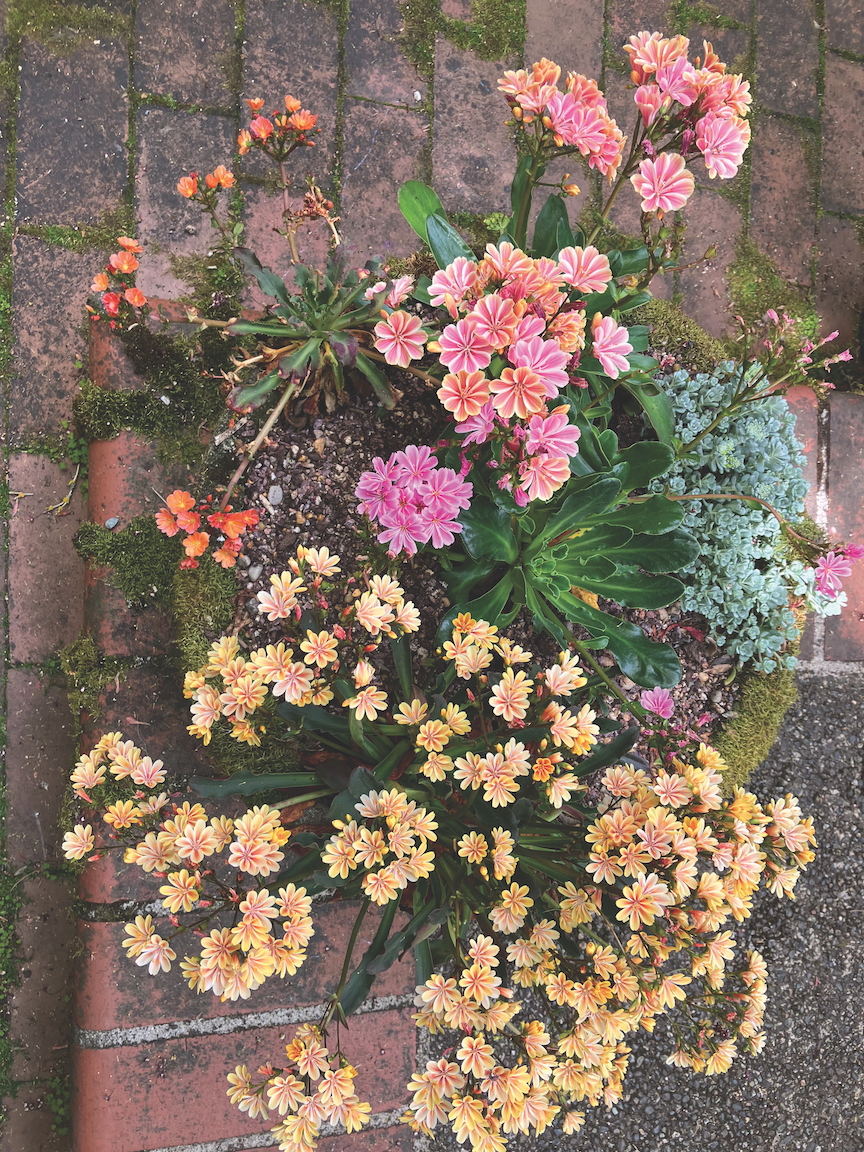In 1803 when President Thomas Jefferson sent Meriwether Lewis and William Clark off on the Corps of Discovery, the primary goal of their expedition was to scout the new western territories, find a route to the Pacific, and make ethnographic studies of indigenous peoples. But there were other objectives. The explorers were to note, minerals, flora and fauna and, in the early stages of the expedition, send samples back to the Capitol and to the Philosophical Society of Philadelphia: Cornflower (Echinacea) Thimbleberry, (Rubus parviflorous), Mock Orange (Philadelphus) and Lewisia (L. cotyledon and L. tweedyi) among them. When the plant parts, sketches, and written descriptions were forwarded to taxonomists in London to be cataloged in 1814, many were given botanical names from Lewis and Clark or the geographical spots in which they were first spotted.
Among those historic plants, Lewisia still remains something of a discovery for gardeners. But what a splendid container plant it is. Lewisia cotyledon is native to southern Oregon, L. tweedyi can be found in the mountains of south central Washington and the Columbia Basin. Both are well worth a place in our gardens.
Both plants grow as rosettes of dark, glossy green leaves, about 4 inches long by an an inch wide. In early spring, well into June they send up branched stems clustered with dime-sized daisy flowers in pink, rose, white, yellow, orange or apricot. If you cut the bloom stalks back when the flowers fade and give the plants a generous shot of liquid fertilizer that is high in phosphorus and potassium, you’ll get a second, if not third, crop of blooms.
 Courtesy Mary Henry
Courtesy Mary Henry The trick to successfully cultivating Lewisia is full sun and very good drainage. A standard soil mix for this plant and others like it is three parts potting soil to two parts drainage material. Some gardeners use sand, others perlite. I use chicken grit from farm stores, Chicken grit is small, rough little chunks of granite that is given to chickens to serve as grinding stones for their gizzards. The farm stores also sell turkey grit, These chunks are larger. I prefer the smaller grit.
Measure the potting soil and the grit or other drainage material. Dump it into a tub and mix thoroughly, then fill a wide, shallow container with the mix. Lewisias are normally sold in 4-inch pots. Take the plants from their pots, set them on to the soil and fill in around the root balls with the mix, spacing plants 5 or 6 inches apart. Once planted put a layer of small gravel or, perhaps the grit, over the entire surface of the container. This keeps moisture away from the leaves and prohibits leaf rot. In the hottest summer weather, I water the plants once a week at their base. Otherwise, I let nature handle the irrigation.
It’s best to buy Lewisia in bloom to assure getting the flower colors you like. Gardeners who like the sophisticated look will likely go for all one color or plants in the same color palette. I like to see as many colors as possible in my container. It’s the one pictured, which has been going strong, for about 15 years, year around, in that very spot.
With the season, indeed the era, of water conservation upon us, now is a good time to channel the spirits of Meriwether Lewis and William Clark and discover Lewisia. It will serve your garden with the steadfast loyalty of Thomas Jefferson. It’s as American as apple pie, Old Glory and, by golly, the Space Needle and Mount Rainier.